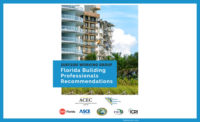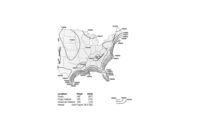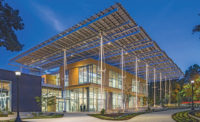Concrete Group Improves Model Code for Existing-Structure Repairs
ACI 562-16 aligns terminology with other structural standards
The updated version of the model code that provides minimum requirements for assessment, repair and rehabilitation of existing concrete structures, released recently, improves upon the initial 2013 repair code, according to the American Concrete Institute. Among other changes, the document is in better alignment with other codes and standards written for existing buildings, says ACI.
“When we finished 562-13, we knew we would have liked to improve upon it but had no time,” says Keith Kesner, committee chairman for ACI 562-16: Code Requirements for Evaluation, repair and Rehabilitation of Concrete Buildings and Commentary.
The model code, which only becomes binding when adopted by a legal jurisdiction, can supplement the International Existing Building Code (IEBC), published by the International Code Council; supplement the code governing existing structures of a local jurisdictional authority; or act as a stand-alone code in a locality that has not adopted an existing building code. When used as a stand-alone code, Appendix A is used in place of Chapter 4, which provides a roadmap of how to use the document with the IEBC, says ACI 562-16.
Key changes from the first release include revisions to definitions used in the code to bring the document into conformance, especially regarding terminology, with the IEBC and other standards for existing structures. For example, the previous 562 used the word “evaluation,” when it should have used “assessment,” says Kesner, a project manager for CVM Engineers.
“An evaluation is more of a ‘yes, no’ checklist, while an assessment is an evaluation with a [repair] path forward,” he says, adding that evaluation is not wrong but other structural standards, including those published by the American Society of Civil Engineers and the International Standards Organization, use “assessment.”
On the content side, Chapter 4 provides the demand-to-capacity ratio limit for delineating when strengthening of an existing structure may be required. “That was not part of 562-13,” says Kesner.
The new release is typically used to repair elements of concrete structures, such as corroded reinforcing steel in parking garages, rather than to rehabilitate entire buildings.
The 23-person main committee of volunteers improved on Section 7.4, which deals with interface bonding between old concrete and the new repair material. The interface material is subjected to different types of loads, depending on the members and the geometry of the repair, says Kesner. The committee also added code requirements for quality assurance testing to improve repair quality and durability.
Last fall, ACI published a guide to help engineers meet the requirements of ACI 562. The document covers the applicability of ACI 562; preliminary evaluations to determine a compliance method for meeting the code requirements; strength reduction factors and load combinations both during and after the repair; and requirements for evaluation, determination of material properties and load testing.
ACI did not have information on the number of copies of ACI 562-13 purchased, but Kesner estimates that there are several thousand current users of the repair code.






